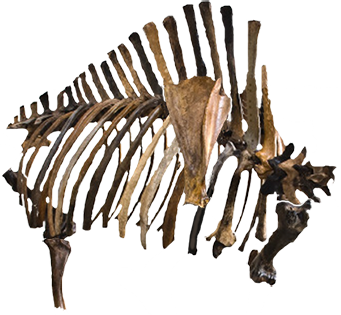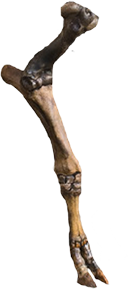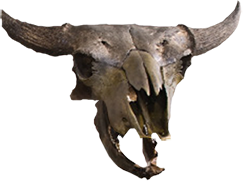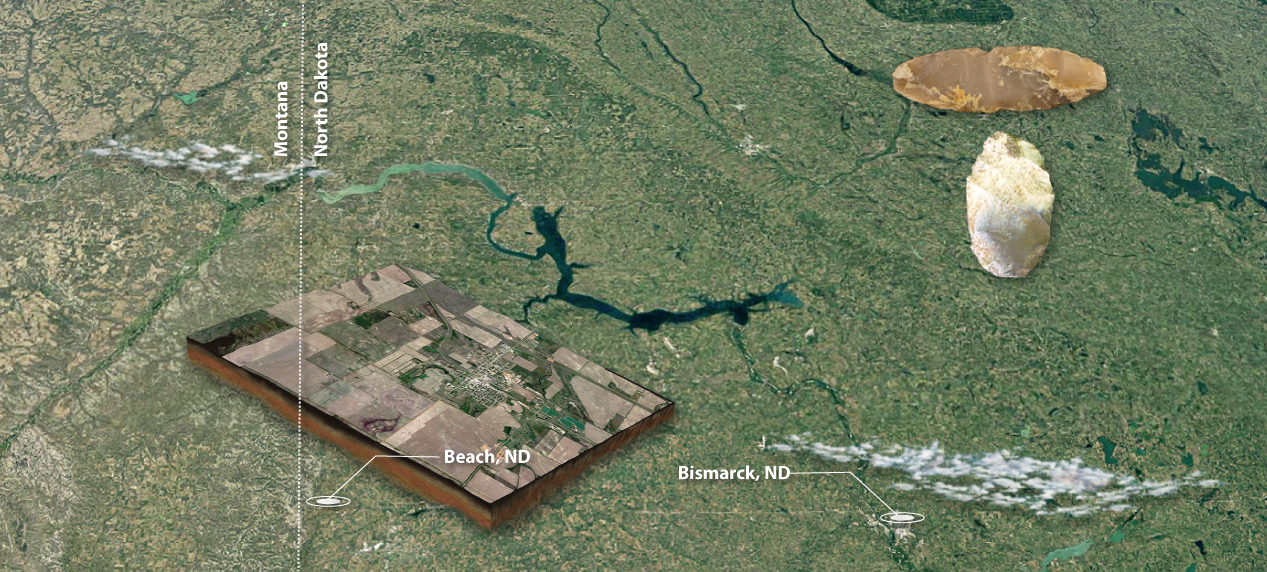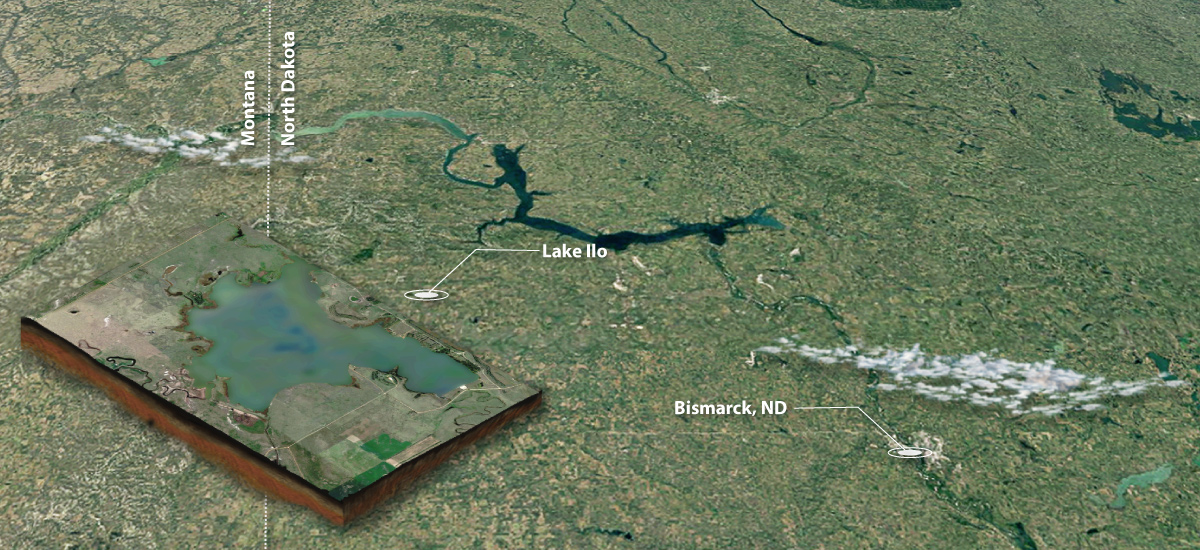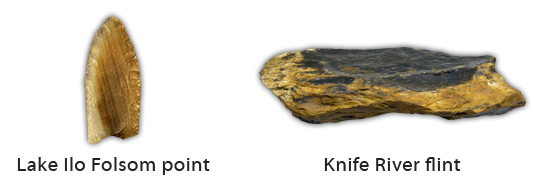A cache is a place for hiding, storing, or preserving something important like food, money, or supplies. Archaeologists can learn a lot about a culture when they find a cache. The early peoples of North Dakota often stored food and supplies in caches that helps us understand what they were eating, what kinds of tools they used, and what other supplies they needed. The maps below indicate archaeological sites where evidence such as caches and hunting sites have been found.
At Beacon Island, people set up a small camp where they processed twenty-nine bison carcasses.They took large portions of the carcasses back to their main camp. This painting illustrates activities and reconstructs the landscape discovered from the artifacts and recovered during the excavation at the Beacon Island site.
Lake Ilo is an important archaeological site located on a tributary (Spring Creek) in the Missouri river watershed. In the late 1980s, the lake level was lowered in order to do repair work on the dam, revealing thousands of years of human occupation. Artifacts such as chipped tools, arrow and spear points were found.



